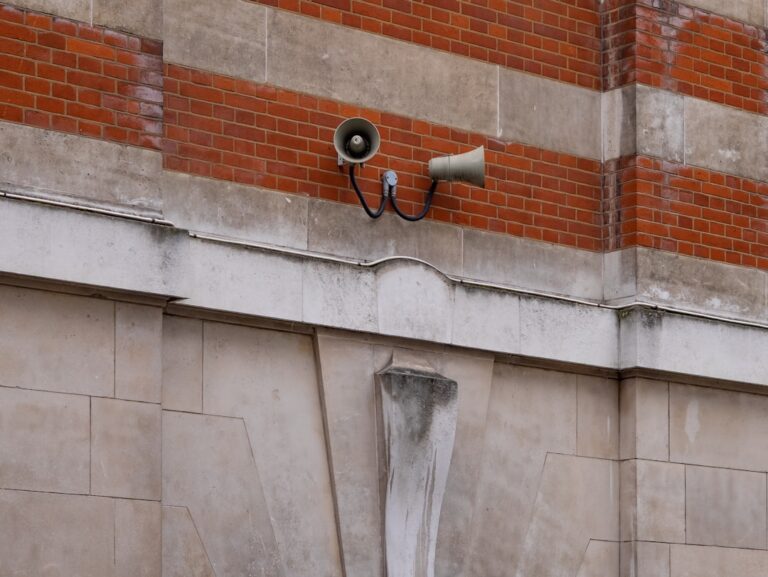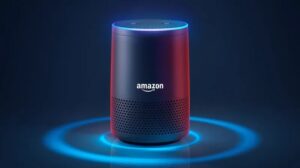The Dawn of a New Era in Home Automation
In a move that sent ripples through the consumer technology landscape, one of the world’s largest tech conglomerates has announced its intention to acquire a pioneering robotics company, famous for creating the robotic vacuum cleaner category. This acquisition is far more than a simple business transaction; it represents a pivotal moment in the evolution of the smart home. It’s not just about cleaning floors anymore. This is about data, spatial awareness, and the quest to create a truly ambient, intelligent living environment. The convergence of a leading robotics platform with a dominant smart home ecosystem promises to accelerate innovation, but it also raises profound questions about privacy, competition, and the future of our relationship with technology in our most personal spaces. This article delves into the technical, strategic, and practical implications of this landmark deal, exploring what it means for the future of Robotics Vacuum News, the broader smart home industry, and consumers caught in the middle of this technological shift.
Section 1: The Strategic Blueprint: Why a Vacuum Company is Worth Billions
At first glance, a tech giant spending billions on a company that makes robotic vacuums might seem like an expensive foray into the home appliance market. However, the true value lies not in the hardware itself, but in the sophisticated software and data-gathering capabilities that power it. This acquisition is a strategic masterstroke aimed at solving one of the biggest challenges in the smart home: understanding the physical space.
The Final Frontier: Mapping the Home
For years, smart home ecosystems have been a collection of disparate, context-unaware devices. A smart speaker knows it’s in the “kitchen” because you labeled it as such, but it has no real understanding of the room’s layout, the furniture within it, or its relationship to the rest of the house. This is the problem that advanced robotic vacuums solve. Using technologies like vSLAM (Visual Simultaneous Localization and Mapping) and LiDAR, these devices create detailed, persistent maps of a home’s interior. They don’t just see obstacles; they understand the difference between a table leg, a stray sock, and a pet. This spatial data is the missing puzzle piece for creating next-generation smart home experiences. The latest AI-enabled Cameras & Vision News highlights how crucial this environmental understanding is for true autonomy. An ecosystem that possesses this detailed floor plan can orchestrate devices with unprecedented intelligence. For example, it could automatically turn on the lights in a specific pathway when you get up at night or instruct a personal robot to navigate to the living room to deliver a message.
Deepening the Ecosystem and Data Moat
The acquiring company has already established a formidable presence in the home with its voice assistants, security cameras, and smart displays. Integrating a fleet of mapping robots solidifies this position, creating a powerful data moat that competitors will struggle to cross. Each cleaning run a vacuum makes refines the home map, notes changes in furniture layout, and learns the household’s patterns of activity. This firehose of data is invaluable for improving AI algorithms, personalizing user experiences, and developing new services. This move is a major development in Smart Home AI News, as it signals a shift from single-function devices to a holistic, data-driven platform. It also touches on trends in AI Sensors & IoT News, where the value is migrating from the sensor itself to the insights derived from the data it collects.
Section 2: A Technical Breakdown: The Synergy of Vision, Voice, and Movement
To fully grasp the significance of this deal, it’s essential to understand the technologies involved and how they might converge. The robotics company brings best-in-class navigation and AI-powered object recognition, while the tech giant brings a world-class voice assistant, cloud infrastructure, and an extensive network of connected devices.

From vSLAM to Ambient Intelligence
The core technology powering modern robotic vacuums is a sophisticated combination of sensors and software. While some models use LiDAR, many high-end vacuums rely on vSLAM. A camera mounted on the device captures frames of the environment hundreds of times per second, identifying unique features like the corner of a picture frame or the pattern on a rug. The robot’s internal sensors (gyroscopes, accelerometers, and odometers) track its own movement. By combining what it sees with how it moves, the robot builds a detailed map and simultaneously locates itself within that map. This is a computationally intensive task that falls under the umbrella of AI Edge Devices News, as much of this processing happens directly on the device.
Now, imagine integrating this spatial data with a voice assistant like Alexa. The commands could become far more natural and context-aware:
- Before Integration: “Alexa, tell Roomba to start cleaning.”
- After Integration: “Alexa, there are crumbs under the dining table. Have the robot clean them up.”
In the second scenario, the system understands the concepts of “crumbs,” “dining table,” and the exact physical location of both. This synergy could extend to other devices. A Ring security camera (part of the AI Security Gadgets News landscape) could detect a pet accident and automatically dispatch the vacuum to that specific spot. This creates a proactive, rather than reactive, smart home.
The Role of AI and Machine Learning
Beyond mapping, the latest robotic vacuums use advanced AI for object recognition. They are trained on vast datasets of images to identify and avoid common household obstacles like cables, shoes, and pet waste—a frequent topic in AI Pet Tech News. This is a form of computer vision, a field that is also central to smart glasses and other wearables. The data collected from millions of homes continuously feeds back into the machine learning models, improving the AI’s performance for all users. When combined with the tech giant’s massive cloud computing resources and AI research divisions, the pace of innovation in AI Personal Robots News could accelerate dramatically. Future devices might not just avoid obstacles but could actively identify items, perhaps noting that you’re low on paper towels or that a package has been left by the door, bridging the gap between digital assistants and the physical world.
Section 3: The Fully Realized Smart Home: Implications and Concerns
The long-term vision behind this acquisition is the creation of an “ambient home,” an environment where technology seamlessly integrates into the background, anticipating needs and acting autonomously. While this vision is compelling, it carries significant implications for user privacy, market competition, and data security.
The Promise of Proactive Automation
A home that understands its own layout and the habits of its occupants can offer unparalleled convenience. Imagine a scenario where your home’s AI, leveraging data from the vacuum’s map and your smart watch (part of Wearables News and AI Fitness Devices News), detects that you’ve just returned from a run. It could instruct the smart speaker to play your workout cooldown playlist, tell the smart lights to adjust to a relaxing hue, and inform the Smart Appliances News-featured air purifier to increase its fan speed in the living room where you’re stretching. This level of orchestration, moving beyond simple voice commands, is the holy grail of home automation. It could also have profound impacts on accessibility, a key topic in AI for Accessibility Devices News, by allowing the home to adapt to the needs of elderly or disabled individuals in a highly intuitive way.
The Unanswered Question of Privacy

The single greatest concern surrounding this acquisition is privacy. The detailed maps of our homes are incredibly sensitive data. They reveal not just the floor plan but also the quality and quantity of our possessions, our lifestyle, and our daily routines. Who has access to this data? How will it be used? The potential for this information to be used for hyper-targeted advertising is obvious. For example, if the robot’s camera detects a worn-out rug or an old television, could you start seeing ads for home decor and electronics?
Furthermore, the combination of indoor maps with outdoor security camera footage and voice assistant interactions creates an incredibly detailed profile of a person’s life. This raises valid security concerns, as a data breach could expose the intimate details of millions of households. Consumers and regulators will be watching closely to see what safeguards are put in place to protect this new class of personal data, a recurring theme in AI Monitoring Devices News.
The Shifting Competitive Landscape
This acquisition will undoubtedly force competitors to react. Other players in the Robotics News space, such as Shark, Roborock, and Ecovacs, may need to form strategic alliances with other tech giants like Google or Apple to compete on an ecosystem level. We could see a balkanization of the smart home market, where consumers must choose a platform and be locked into its compatible devices. This could stifle innovation if smaller companies are unable to compete with the massive R&D budgets and data advantages of the major players. This consolidation is a critical development for anyone following AI Research / Prototypes News and the broader consumer tech industry.
Section 4: Navigating the New Ecosystem: Recommendations for Consumers
For current and prospective owners of robotic vacuums and smart home devices, this new reality presents both exciting possibilities and important considerations. Making an informed decision requires weighing the benefits of convenience against the potential trade-offs.
Pros and Cons for the End-User

Potential Pros:
- Seamless Integration: Devices will work together more intelligently and intuitively, requiring less manual setup and intervention.
- Enhanced Capabilities: The fusion of technologies will likely lead to smarter, more capable robots that can perform a wider range of tasks beyond cleaning.
- Simplified Experience: A single, unified app and voice assistant could control everything from your vacuum to your thermostat, a core promise of AI Assistants News.
Potential Cons:
- Privacy Risks: The collection of detailed in-home data presents significant privacy concerns that users must be comfortable with.
- Vendor Lock-In: Committing to one ecosystem may make it difficult or expensive to switch to a competitor’s products in the future.
- Data Monetization: Your data, including the layout of your home and your daily habits, could become a product that is used to sell you more goods and services.
Tips and Best Practices
As we move into this new era, consumers should be proactive in managing their smart home technology:
- Read the Privacy Policy: Before connecting a new device, take the time to understand what data it collects, how it is stored, and with whom it is shared.
- Manage Your Data: Use the privacy dashboards provided by the manufacturer. Regularly review and delete voice recordings and map data if you are not comfortable with it being stored.
- Use Strong Security: Secure your home Wi-Fi network with a strong password and enable two-factor authentication on your smart home accounts to prevent unauthorized access.
- Consider the Trade-Offs: For every feature, ask yourself if the convenience it offers is worth the data you are providing in return. Sometimes a “dumber” device is the smarter choice for your privacy.
Conclusion: Charting the Course for the Intelligent Home
The acquisition of a leading robotics vacuum company by a tech titan is a landmark event that signals the next phase of the smart home revolution. It’s a clear indication that the future lies not in individual gadgets, but in integrated, intelligent systems that understand and interact with our physical world. The potential for a truly automated, helpful home is immense, promising to simplify our lives and provide new levels of convenience. However, this future also comes with a critical responsibility. As these systems map our homes and learn our routines, we must engage in a robust conversation about data ownership, privacy, and security. For consumers, the path forward requires a balance of enthusiasm for innovation and a healthy dose of critical awareness. The truly smart home of the future will not only be one that is technologically advanced but also one that is built on a foundation of trust and user control.












